NIL
ESPN releases final mock draft, predictions for first two rounds
The 2025 MLB Draft is rapidly approaching. Selections are getting underway this weekend on Sunday, July 13. This year’s edition is loaded with talent from both the college and high school ranks, headlined by the two best pitchers from the 2025 college baseball season. ESPN released its final mock draft prior to this weekend’s event, […]

The 2025 MLB Draft is rapidly approaching. Selections are getting underway this weekend on Sunday, July 13.
This year’s edition is loaded with talent from both the college and high school ranks, headlined by the two best pitchers from the 2025 college baseball season. ESPN released its final mock draft prior to this weekend’s event, featured below.
1. Washington Nationals: LHP Kade Anderson, LSU
LSU sophomore left-handed pitcher Kade Anderson has skyrocketed to the projected No. 1 pick in the MLB Draft. Anderson led all college pitchers this season in strikeouts (180) and pitched to a 3.18 ERA in 119 innings. He held Coastal Carolina to just three hits and no runs with 10 strikeouts in the opening game of the College World Series Final, posting the first CWS shutout since 2018.
“I mean, his next pitch should be for someplace in the Washington Nationals organization,” LSU coach Jay Johnson said following their win in the CWS. “It’s not close. And they usually draft really well. And he’s the best player in the country. There’s nobody closer to the Major Leagues than that right now.”
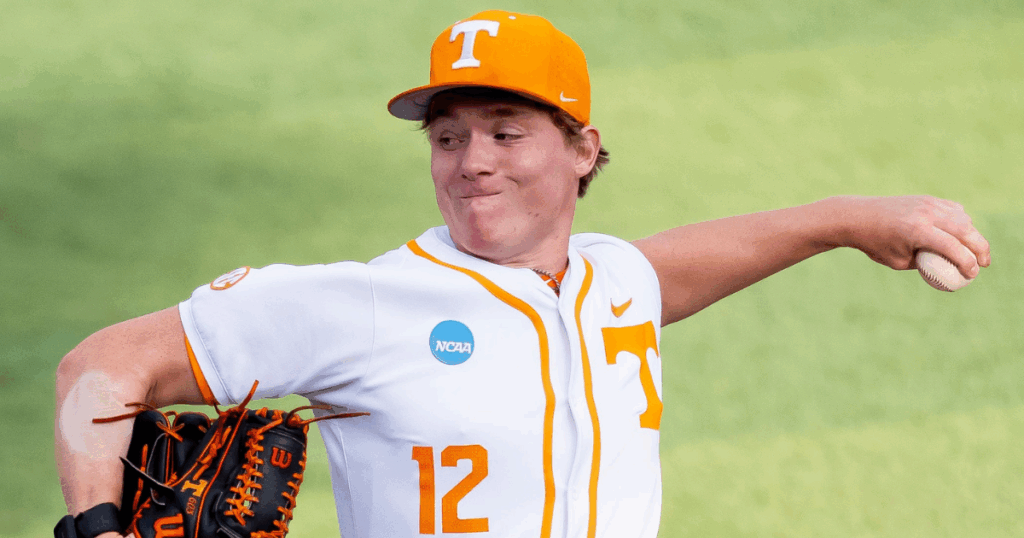
Tennessee left-handed pitcher Liam Doyle ranked second in the country in strikeouts (164) behind Anderson, pitching to a 3.20 ERA in 95 2/3 innings this season. He struggled a bit down the final stretch, however, posting a 6.86 ERA over his final five starts (21 innings).
Doyle, however, remains positioned to be the highest drafted pitcher in Tennessee program history. This comes after transferring from Ole Miss prior to the season.
Right-handed pitcher Seth Hernandez out of Corona High School (CA) would mark Cincinnati’s third straight selection of an arm in the Top 10 picks. Hernandez is the top high school pitching prospect of the 2025 class and has reached 100 mph on his fastball.
He’s verbally committed to Vanderbilt. But it looks like he probably won’t reach campus and will choose to go pro.
Holliday, who is the son of seven-time MLB All-Star Matt Holliday and brother of Jackson Holliday (First Overall Pick in the 2022 MLB Draft), was projected as the No. 1 pick for most of the past year. But he has slipped a bit recently.
He was recently named Gatorade’s Oklahoma Player of the Year at Stillwater High School and looks to become the fourth No. 1 pick out of high school in the past 10 MLB Drafts. He’s verbally committed to Oklahoma State, but it looks like he probably won’t reach campus.
5. St. Louis Cardinals: SS Eli Willits, Oklahoma commit
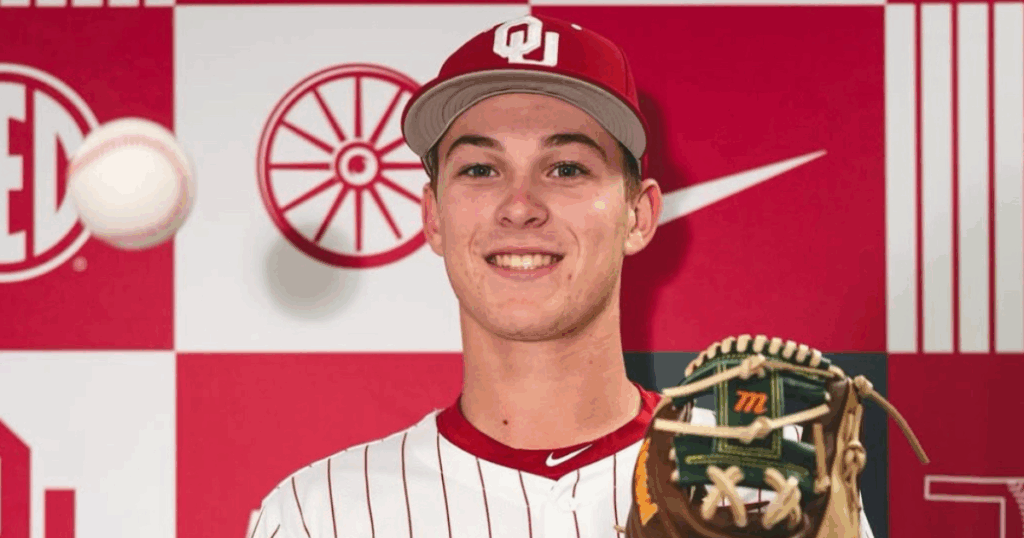
Fort-Cobb Broxton (OK) High product Eli Willits is one of three talented high school shortstops projected in the Top 10 of this year’s draft. He is listed at No. 5 on MiLB.com’s Prospect Rankings ahead of Carlson and is a proficient switch-hitter. His father, Reggie Willits, is a former MLB veteran who is now an associate head coach at Oklahoma.
His brother, Jaxon, started 50 games for the Sooners at shortstop this season. He’s also verbally committed to Oklahoma, but it looks like he probably won’t reach campus.
Oregon State shortstop Aiva Arquette was originally selected in the 18th round of the 2022 MLB Draft by the Arizona Diamondbacks, but bet on himself and returned to college. The decision paid off mightily, as the 2025 First Team All-American is projected as the No. 3 pick in the 2025 Draft.
Starting for a Beaver program that made the College World Series for the first time since 2018, Arquette hit for a .354 average with 17 doubles, 19 home runs, 66 RBI, a .654 SLG% and a .461 OBP%. He would become Oregon State‘s third top-three pick in the last seven Drafts.
Shortstop JoJo Parker is the third projected high school shortstop to be selected in the top-10. He’s the twin brother of Perfect Game All-American Jacob Parker and his tabbed as MiLB’s No. 9 ranked prospect.
He’s verbally committed to Mississippi State. But it looks like he probably won’t reach campus and will choose to go pro.
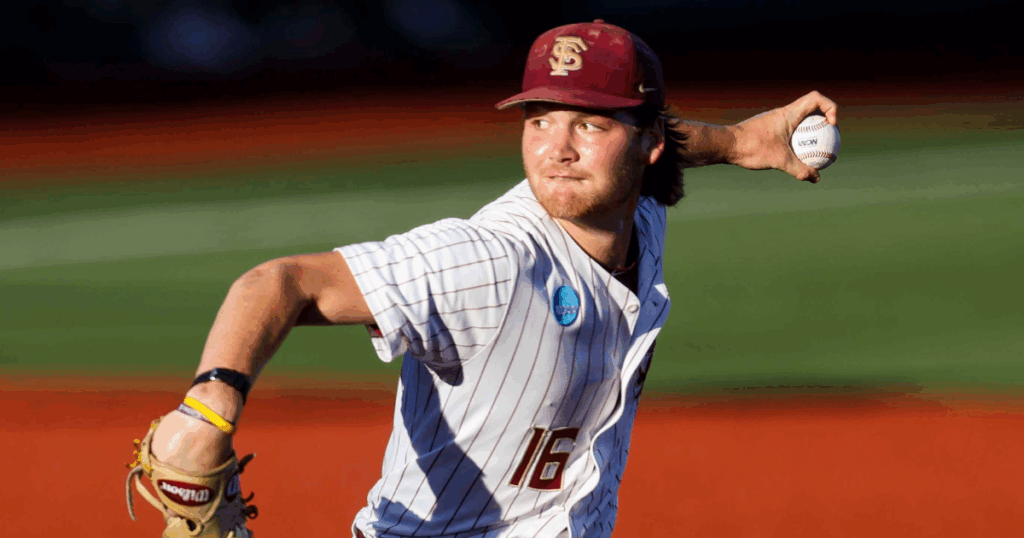
Florida State left-handed pitcher Jamie Arnold is the third projected college lefty to go in the top-five picks in this Mock Draft. He capped off back-to-back stellar campaigns for the Seminoles by pitching to a 2.98 ERA with 119 strikeouts in 84 2/3 innings this season.
In 13 2/3 innings of work in this year’s NCAA Tournament, Arnold led FSU to two wins (Mississippi State and Oregon State) by pitching to a 2.63 ERA with 22 strikeouts. He seems poised to be Florida State’s highest drafted arm since right-hander Jonathan Johnson went No. 7 overall in 1995.
Auburn‘s Ike Irish was one of the best catchers in college baseball in 2024, but transitioned to the outfield in 2025. He excelled there as well, making just two errors in 55 games. Offensively, he hit for a .364 average with 13 doubles, 19 home runs and 58 RBI for a 40-win Tiger team.
Over the span of three seasons, Irish hit for a .350 average with 48 doubles, 39 home runs and 167 RBI. He was named to the All-SEC First Team in both 2024 and 2025.
10. Chicago White Sox: SS Billy Carlson, Tennessee commit
Billy Carlson is a stud defensive shortstop out of Corona High School in California. He is one of two prospects out of Corona High (RHP Seth Hernandez) projected as First-Round picks. He was once a two-way player (with a fastball in the mid-90s), but he has focused on the infield as he embarks on his professional baseball journey.
He is currently verbally committed to Tennessee. But it looks like he probably won’t reach campus and go pro instead.
Picks 11-30 of the draft
11. Athletics: RHP Kyson Witherspoon, Oklahoma
12. Texas Rangers: SS Steele Hall, Tennessee commit
13. San Francisco Giants: OF Brendan Summerhill, Arizona
14. Tampa Bay Rays: OF Jaden Fauske, LSU commit
15. Boston Red Sox: 3B Gavin Fien, Texas commit
16. Minnesota Twins: 2B Gavin Kilen, Tennessee
17. Chicago Cubs: 3B Josh Hammond, Wake Forest commit
18. Arizona Diamondbacks: C Caden Bodine, Coastal Carolina
19. Baltimore Orioles: SS Wehiwa Aloy, Arkansas
20. Milwaukee Brewers: SS Marek Houston, Wake Forest
21. Houston Astros: OF Jace LaViolette, Texas A&M
22. Atlanta Braves: RHP Tyler Bremner, UC Santa Barbara
23. Kansas City Royals: RHP Gage Wood, Arkansas
24. Detroit Tigers: SS Daniel Pierce, Georgia commit
25. San Diego Padres: 3B/OF Quentin Young, LSU commit
26. Philadelphia Phillies: RHP Matthew Fisher, Indiana commit
27. Cleveland Guardians: SS Tate Southisene, USC commit
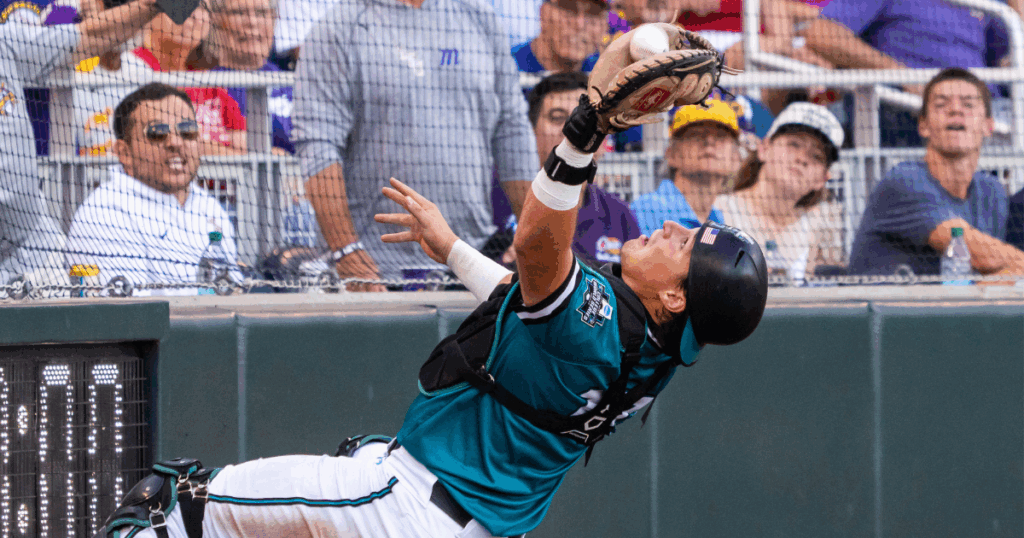
28. Kansas City Royals: RHP Aaron Watson, Florida commit
Compensatory Round of draft
29. Arizona Diamondbacks: OF Slater de Brun, Vanderbilt commit
30. Baltimore Orioles: 3B Xavier Neyens, Oregon State commit
31. Baltimore Orioles: 1B/3B Andrew Fischer, Tennessee
32. Milwaukee Brewers: SS/2B Kayson Cunningham, Texas commit
Competitive Balance Round A of draft
33. Boston Red Sox: RHP Marcus Phillips, Tennessee
34. Detroit Tigers: SS Coy James, Ole Miss commit
35. Seattle Mariners: LHP Zach Root, Arkansas
36. Minnesota Twins: OF Devin Taylor, Indiana
37. Baltimore Orioles: SS Dax Kilby, Clemson commit
38. New York Mets: RHP Patrick Forbes, Louisville
39. New York Yankees: RHP JB Middleton, Southern Miss
40. Los Angeles Dodgers: OF Cam Cannarella, Clemson
41. Los Angeles Dodgers: LHP Kruz Schoolcraft, Tennessee commit
42. Tampa Bay Rays: RHP Anthony Eyanson, LSU
43. Miami Marlins: OF Charles Davalan, Arkansas
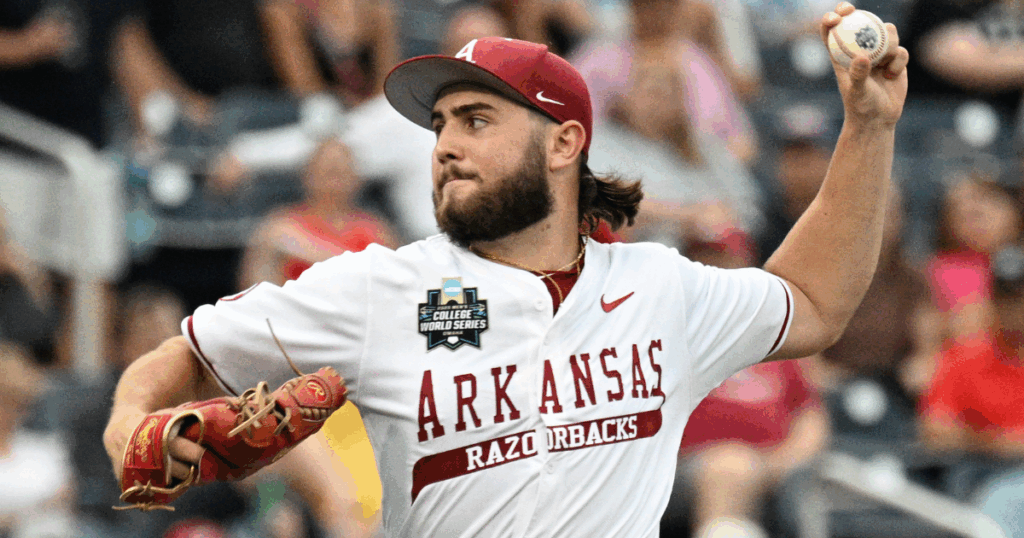
Second Round of draft
44. Chicago White Sox: OF Ethan Conrad, Wake Forest
45. Colorado Rockies: 2B/OF Sean Gamble, Vanderbilt commit
46. Miami Marlins: SS Josh Owens, Georgia Southern commit
47. Los Angeles Angels: OF Max Belyeu, Texas
48. Athletics: SS Alex Lodise, Florida State
49. Washington Nationals: LHP J.D. Thompson, Vanderbilt
50. Pittsburgh Pirates: C Luke Stevenson, North Carolina
51. Cincinnati Reds: C Taitn Gray, Oregon commit
52. Texas Rangers: C Michael Oliveto, Yale commit
53. Tampa Bay Rays: OF Dean Moss, LSU commit
54. Minnesota Twins: OF Brandon Compton, Arizona State
55. St. Louis Cardinals: SS Cooper Flemming, Vanderbilt commit
56. Chicago Cubs: OF Josiah Hartshorn, Texas A&M commit
57. Seattle Mariners: RHP Malachi Witherspoon, Oklahoma
58. Baltimore Orioles: OF Mason Neville, Oregon
59. Milwaukee Brewers: RHP Chase Shores, LSU
60. Atlanta Braves: CF Kane Kepley, North Carolina
61. Kansas City Royals: RHP Riley Quick, Alabama
62. Detroit Tigers: 2B Mitch Voit, Michigan
63. Philadelphia Phillies: OF Alec Blair, Oklahoma commit
64. Cleveland Guardians: SS Jordan Yost, Florida commit
65. Los Angeles Dodgers: SS Aidan West, NC State commit
Competitive Balance Round B of draft
66. Cleveland Guardians: LHP Cade Obermueller, Iowa
67. Tampa Bay Rays: RHP A.J. Russell, Tennessee
68. Milwaukee Brewers: 3B Dean Curley, Tennessee
69. Baltimore Orioles: OF Korbyn Dickerson, Indiana
70. Cleveland Guardians: LHP Aiden Stillman, Vanderbilt commit
71. Kansas City Royals: RHP Angel Cervantes, UCLA commit
72. St. Louis Cardinals: LHP Briggs McKenzie, LSU commit
73. Pittsburgh Pirates: 1B Ethan Petry, South Carolina
74. Colorado Rockies: OF James Quinn-Irons, George Mason
75. Boston Red Sox: OF Jake Cook, Southern Miss
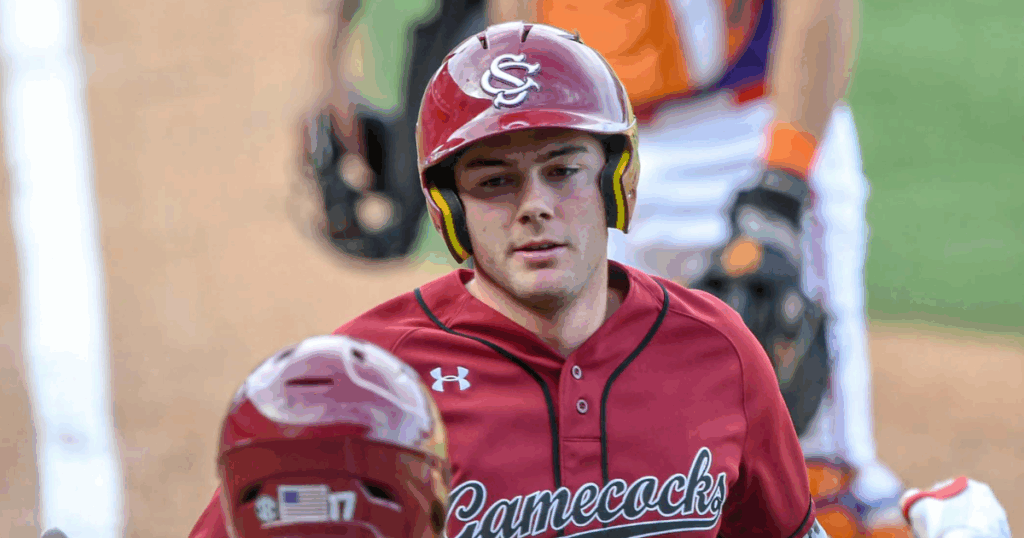
NIL
$1.1M NIL-Valued Star Claps Back at HC Brian Kelly’s “Death Valley Jr.” Jab Ahead of Clemson vs LSU College Football Showdown
LSU and Clemson have a lot of things in common, aside from their teams both being called the Tigers. Both teams call their respective home stadiums “Death Valley,” though LSU head coach Brian Kelly riled up Clemson fans by calling their home stadium, Memorial Stadium, “Death Valley Junior.” TJ Parker was having none of that […]

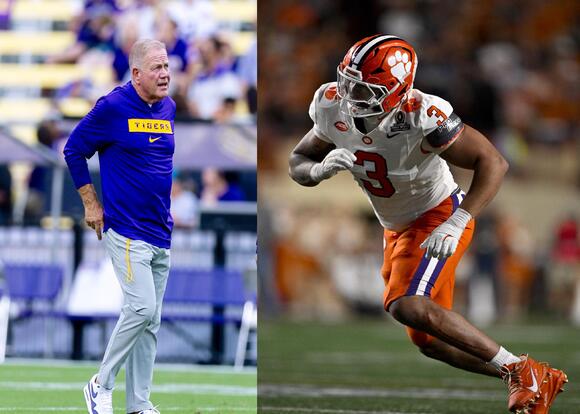
LSU and Clemson have a lot of things in common, aside from their teams both being called the Tigers. Both teams call their respective home stadiums “Death Valley,” though LSU head coach Brian Kelly riled up Clemson fans by calling their home stadium, Memorial Stadium, “Death Valley Junior.” TJ Parker was having none of that and fired back at the LSU coach.
The clap-back from Parker was also a nod to the teams’ season opener against each other on Aug. 30, where LSU will be visiting what Kelly called “Death Valley Junior.” LSU has a strong team this year, with a lot of transfers, but TJ Parker, whose NIL is valued at $1.1 million, noted that they will be in for quite the challenge for LSU.
“They can have their opinion. We’re gonna handle all that on August 30,” TJ Parker said. “At the end of the day, we can do all the talking, we still got to play. So, we gonna see, you know what I’m saying? They’re hyping up everybody across the board, all these transfers they got — we’ll see.”
The last time LSU met, the Bayou Tigers defeated Clemson 42-25 during the 2019 national championship game. However, that was a different time, and the Tigers had a different coach. Kelly has not yet won a national title himself, though the two previous LSU coaches did, and Kelly is seen to still be playing catchup to them.
Clemson’s Memorial Stadium was the first to be called “Death Valley” by Presbyterian College head coach Lonnie McMillian back in 1948. LSU did not start calling Tiger Stadium “Death Valley” until over 10 years later, in 1959, after LSU defeated Clemson at home, 1959, when it was known as “Deaf Valley” for how loud it got.
TJ Parker Speaks on Not Leaving Clemson Despite Transfer Offers From Other Schools
As for TJ Parker, he actually has a lot of offers from other schools to enter the transfer portal, but he has so far stayed loyal to Clemson. During the ACC Media Days, the defensive end revealed why he has not even entertained any of them.
“There’s no point in me leaving if I have everything I want here,” Parker told reporters.
This statement from Parker only reinforces that the culture Dabo Swinney has made over there at Clemson, with the school having a “family atmosphere” that may prove attractive to players and making the older ones want to stay.
Related: ‘He Has To Win’: CFB Analyst Sets Expectations Straight As LSU HC Brian Kelly Writes Cheque Worth $1,000,000
College Sports Network has you covered with the latest news, analysis, insights, and trending stories in college football, men’s college basketball, women’s college basketball, and college baseball!
NIL
MAC football: How coaches and players have adapted to NIL, transfer portal changes
DETROIT — In recent years, it has become more and more challenging to be a college football head coach. Gone are the days of recruiting players and coaching them up for four or five years. Instead, the sport finds itself in an era of unprecedented player movement thanks to the transfer portal quickly facilitating moves […]
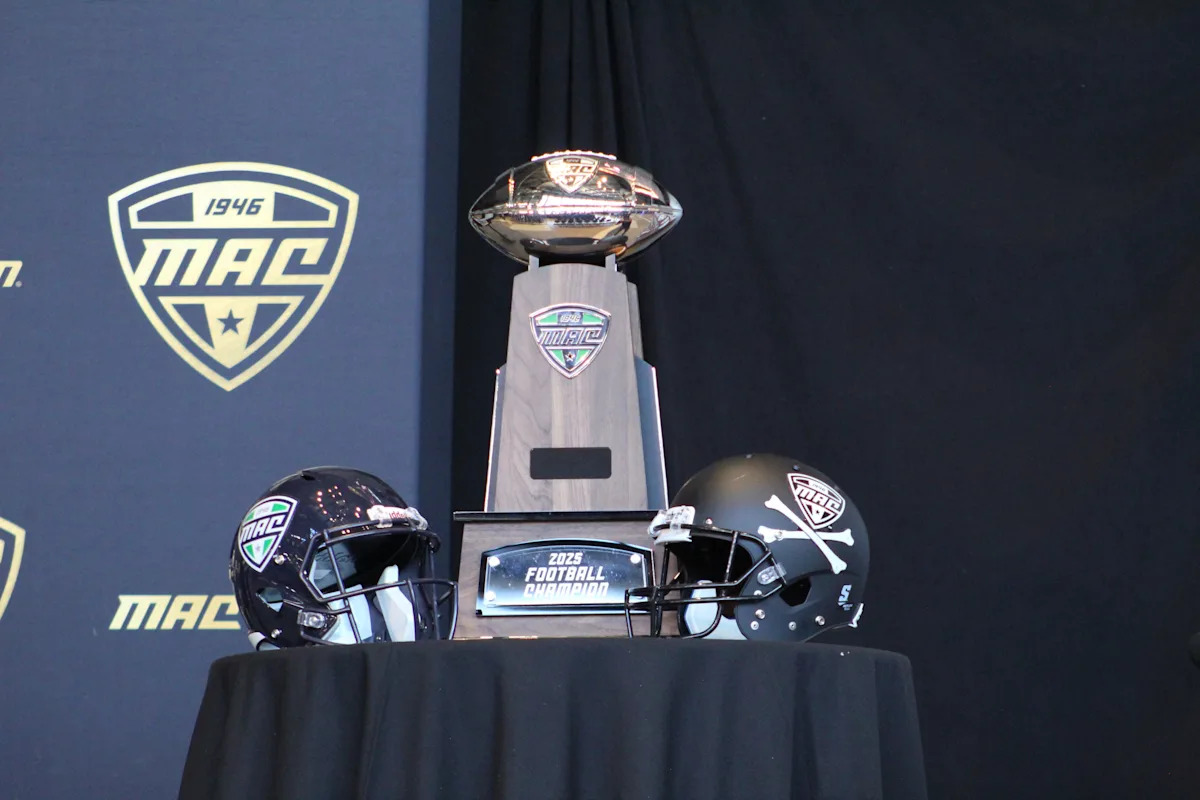
DETROIT — In recent years, it has become more and more challenging to be a college football head coach.
Gone are the days of recruiting players and coaching them up for four or five years. Instead, the sport finds itself in an era of unprecedented player movement thanks to the transfer portal quickly facilitating moves between NCAA institutions with few restrictions.
Advertisement
Widespread tampering under the guise of name, image and likeness (NIL) deals has only exacerbated such movement. While schools and coaches can’t directly recruit players from other teams, there are no rules preventing independent NIL collectives from negotiating with agents and making offers to players to enter the portal. This has created a system where the top players in the NCAA’s non-autonomous conferences (Group of 5) are often poached by teams in autonomous conferences (Power 4).
The Mid-American Conference is in the former group, seeing its top talent migrate up to the Power 4 level more frequently over the last few years. Of the 11 players on the 2024 All-MAC first-team who retained eligibility for 2025, only two will return to their 2024 teams. Meanwhile, eight of the nine who transferred wound up at Power 4 schools.
This new era raises plenty of questions. How can the coaches of the MAC best respond and adapt to the constant roster turnover? Does the constantly looming threat of the portal affect locker rooms during the season? How understanding are players when their teammates move on? Well, like almost everything else, it varies from school to school.
More: ‘Pirate mentality’ guiding MAC commissioner through uncertain times in college football
Advertisement
More: ‘Establish our standards’: How Ball State football coach Mike Uremovich is shifting the culture
Coaches emphasize culture, relationships
Perhaps the most eventful transfer portal season among the MAC belongs to Ball State. Exactly half of its roster — 55 out of 110 players — is new this season, and new head coach Mike Uremovich replaced almost the entire staff with his own guys. With more new faces than old, it’s been easier for everyone to get on the same page as the program begins a new era.
“The new guys who came in and the guys who were returning, it was all new to them, so they were all going through it for the first time.” Uremovich said. “It’s fun to watch that all coming together, and then you have the new crop of guys that comes in May and June and high school guys, so we’ve got to get those guys bought in too.”
Advertisement
The Cardinals are one of six teams in the MAC who will have a new coach this season. This group includes the reigning MAC champion Ohio Bobcats, as former offensive coordinator Brian Smith will take over the head coaching post from Tim Albin, who took the Charlotte job mere hours after the MAC title game.
Despite Albin’s stunning move and the fact that he took a slew of assistant coaches with him, Ohio only lost a handful of players to the portal. The Bobcats have also had success recruiting from the portal, as many of the key contributors to their conference championship victory were former transfers.
“When you really emphasize the culture within your program and that gets built among the players that are in it, and you are constantly emphasizing it within your team, the new players are going to be able to adapt to that culture, or they’re not going to work out,” Smith said. “We’ve done a good job of identifying kids that we think fit what we do from a program standpoint, but also culturally.”
Another team with limited roster turnover this offseason was Buffalo. The Bulls had the MAC’s least active portal period in terms of both transfers out and in, and they were one of the two teams to retain a 2024 first-team All-MAC player with linebacker Red Murdock. Going into his second season as the head coach, Pete Lembo takes pride in the Bulls’ limited movement and cited the program’s emphasis on relationships as a key factor in the continuity.
Advertisement
“I think the best way to overcome those (challenges) is to do what we’ve always done, which is build great relationships,” Lembo said. “The reason I got into coaching 30-plus years ago was because I enjoyed the relationships, player-to-player, coach-to-player, the staff, the administration, and those things haven’t changed.”
Of course, not every team in the conference was as fortunate as Ohio and Buffalo. Eastern Michigan, for example, has 50 new players this season. Twelfth-year coach Chris Creighton — tied for the longest tenured head coach in the MAC — remembers a time before the conference was ravaged by the portal and has had to adapt to its new landscape. Creighton believes that his adaptation has been made easier by the fact that his team culture is firmly solidified with his decade-plus of experience with the Eagles.
“Our guys know who they are, so we can recruit to that,” Creighton said. “We’re not trying to figure out who we are, we’re not trying to establish who we are. That’s what we want to continue to be really strong in, is knowing who we are and having a certain culture.”
No hard feelings among players
While one might expect constant roster turnover and NIL negotiations to create animosity or jealousy within a locker room, the players of the MAC are generally understanding. Most players get the “business decision” nature of their teammates who opt for the portal, and those who stick around know they need to rally around the next man up.
Advertisement
“We’re not going to dwell on who’s not here,” said Eastern Michigan defensive lineman Jefferson Adam. “You know, best of luck to them, but we’re just building off what we have because that’s ultimately what’s most important.”
Players who do decide to stay often play a role in convincing others to do the same. For coaches who now have to worry about re-recruiting their own players, having players who can do it for them is a big advantage.
“For a head coach, it’s one of your biggest jobs to recruit your own roster,” Western Michigan coach Lance Taylor said. “Your own players can be a huge part of that because honestly, those are the guys that they battle with every single day. They live with them, they hang out with them, they have really close and deep relationships.”
Those relationships don’t expire when players do decide to leave. Adam, a former Iowa State transfer, is still in touch with some of his Cyclones teammates. Ohio quarterback Parker Navarro spent his first two seasons at UCF, where he met two friends who he remained close enough with to be in each of their weddings recently. Ball State defensive tackle Darin Conley is still close with many of the former Cardinals who left this offseason and continues to support them in their new destinations.
Advertisement
“You’ve got to remember these guys were our teammates,” Conley said. “We’ve been through thick and thin, they just happened to go somewhere they thing was a benefit for them. You can’t really hate or knock them for that. With the guys who transferred, we’re still close friends. A lot of guys still hang out with each other because we still kind of live close.
“They’re still our guys, and we’re still going to love them. They’re just not currently our teammates.”

The Mid-American Conference football championship trophy at the MAC Football Kickoff media day.
Contact Cade Hampton via email at cbhampton@muncie.gannett.com or on X, formerly known as Twitter, @CadeHamp10.
This article originally appeared on Muncie Star Press: How MAC football has shifted in the NIL and transfer portal era
NIL
President Donald Trump signs executive order related to college sports
Share Tweet Share Share Email President Donald Trump signed an executive order on Thursday related to college sports and NIL. The executive order, which is titled “President Donald J. Trump Saves College Sports,” is intended to help enforce new provisions on athletic scholarships and “pay-for-play” licensing deals for […]

President Donald Trump signed an executive order on Thursday related to college sports and NIL.
The executive order, which is titled “President Donald J. Trump Saves College Sports,” is intended to help enforce new provisions on athletic scholarships and “pay-for-play” licensing deals for athletes.
Here is an excerpt from ESPN:
Trump’s order sets out specific guidelines for preserving athletic scholarships based on an athletic department’s annual revenue. It also declares that schools should not permit athletes to accept “third-party, pay-for-play payments.” The order states that Secretary of Education Linda McMahon should use future federal funding decisions among other tools to force schools to abide by the administration’s policy.
The NCAA always has prohibited pay-for-play payment from third parties. In the past several years, college sports leaders have struggled to find ways to stop boosters at the industry’s wealthiest schools from paying athletes via contracts that are endorsement deals on paper but function in reality as de facto salaries.
“A national solution is urgently needed to prevent this situation from deteriorating beyond repair and to protect non-revenue sports, including many women’s sports, that comprise the backbone of intercollegiate athletics,” Trump stated in the order.
The executive order states that endorsement deals from third parties should continue to be permitted so long as they reflect a “fair market value.”
Arkansas head coach John Calipari spoke out about the executive order, saying he is “encouraged” by the move:
I am encouraged by the President’s executive order today. This is an important step forward and will create opportunity for meaningful dialogue and movement toward a clearer picture of college athletics for everyone.
As we move forward, we must continue to do what’s right for…
You can read the actual executive order here

NIL
Copy of Trump signs order to clarify college athletes’ employment status amid NIL chaos :: WRALSportsFan.com
By WILL WEISSERT, Associated Press WASHINGTON — WASHINGTON (AP) — President Donald Trump on Thursday signed an executive order mandating that federal authorities clarify whether college athletes can be considered employees of the schools they play for in an attempt to create clearer national standards in the NCAA’s name, image and likeness era. Trump directed […]

WASHINGTON — WASHINGTON (AP) — President Donald Trump on Thursday signed an executive order mandating that federal authorities clarify whether college athletes can be considered employees of the schools they play for in an attempt to create clearer national standards in the NCAA’s name, image and likeness era.
Trump directed the secretary of labor and the National Labor Relations Board to clarify the status of collegiate athletes through guidance or rules “that will maximize the educational benefits and opportunities provided by higher education institutions through athletics.” The order does not provide or suggest specifics on the controversial topic of college athlete employment.
The move comes after months of speculation about whether Trump will establish a college sports commission to tackle some of the thorny issues facing what is now a multibillion-dollar industry. He instead issued an order intended to add some controls to “an out-of-control, rudderless system in which competing university donors engage in bidding wars for the best players, who can change teams each season.”
“Absent guardrails to stop the madness and ensure a reasonable, balanced use of resources across collegiate athletic programs that preserves their educational and developmental benefits, many college sports will soon cease to exist,” Trump’s order says. “It is common sense that college sports are not, and should not be, professional sports, and my administration will take action accordingly.”
There has been a dramatic increase in money flowing into and around college athletics and a sense of chaos. Key court victories won by athletes angry that they were barred for decades from earning income based on their celebrity and from sharing in the billions of revenue they helped generate have gutted the amateurism model long at the heart of college sports.
Facing a growing number of state laws undercutting its authority, the NCAA in July 2021 cleared the way for athletes to cash in with NIL deals with brands and sponsors — deals now worth millions. That came mere days after a 9-0 decision from the Supreme Court that found the NCAA cannot impose caps on education-related benefits schools provide to their athletes because such limits violate antitrust law.
The NCAA’s embrace of NIL deals set the stage for another massive change that took effect July 1: The ability of schools to begin paying millions of dollars to their own athletes, up to $20.5 million per school over the next year. The $2.8 billion House settlement shifts even more power to athletes, who have also won the ability to transfer from school to school without waiting to play.
At Big Ten Conference football media days in Las Vegas, Purdue coach Barry Odom was asked about the Trump order.
“We’ve gotten to the point where government is involved. Obviously, there’s belief it needs to be involved,” he said. “We’ll get it all worked out. The game’s been around for a hundred years and it’s going to be around 100 more.”
The NCAA has been lobbying for several years for limited antitrust protection to keep some kind of control over this new landscape — and avoid more crippling lawsuits — but a handful of bills have gone nowhere in Congress. Trump’s order makes no mention of that, nor does it refer to any of the current bills in Congress aimed at addressing issues in college sports.
NCAA President Charlie Baker and the nation’s largest conferences both issued statements saying there is a clear need for federal legislation.
“The association appreciates the Trump administration’s focus on the life-changing opportunities college sports provides millions of young people and we look forward to working with student-athletes, a bipartisan coalition in Congress and the Trump administration,” said Baker, while the conferences said it was important to pass a law with national standards for athletes’ NIL rights as soon as possible.
The 1,100 universities that comprise the NCAA have insisted for decades that athletes are students who cannot be considered anything like a school employee. Still, some coaches have recently suggested collective bargaining as a potential solution to the chaos they see.
It is a complicated topic: Universities would become responsible for paying wages, benefits, and workers’ compensation and schools and conferences have insisted they will fight any such move in court. While private institutions fall under the National Labor Relations Board, public universities must follow labor laws that vary from state to state and it’s worth noting that virtually every state in the South has “right to work” laws that present challenges for unions.
Trump’s order also:
— Calls for adding or at least preserving athletic scholarships and roster spots for non-revenue sports, which are those outside football and basketball. The House settlement allows for unlimited scholarships but does impose roster limits, leading to a complicated set of decisions for each program at each school that include potential concerns about Title IX equity rules. Trump said “opportunities for scholarships and collegiate athletic competition in women’s and non-revenue sports must be preserved and, where possible, expanded.”
— Asks the Justice Department and Federal Trade Commission to “preserve college athletics through litigation” and other actions to protect the rights and interests of athletes — a stance that could influence ongoing lawsuits filed by athletes over eligibility and other issues.
— Directs White House staff to work with the U.S. Olympic and Paralympic Committee to protect the collegiate pipeline feeding Team USA. College sports programs produce around three-quarters of U.S. Olympians at a typical Summer Games, but some are on uncertain footing as schools begin sharing revenue with athletes and the lion’s share going to football and basketball.
___
AP National Writer Eddie Pells contributed.
___
AP college sports: https://apnews.com/hub/college-sports
NIL
Trump signs order to clarify college athletes’ employment status
By WILL WEISSERT, Associated Press WASHINGTON (AP) — President Donald Trump on Thursday signed an executive order mandating that federal authorities clarify whether college athletes can be considered employees of the schools they play for in an attempt to create clearer national standards in the NCAA’s name, image and likeness era. Trump directed the secretary of labor and the […]

By WILL WEISSERT, Associated Press
WASHINGTON (AP) — President Donald Trump on Thursday signed an executive order mandating that federal authorities clarify whether college athletes can be considered employees of the schools they play for in an attempt to create clearer national standards in the NCAA’s name, image and likeness era.
Trump directed the secretary of labor and the National Labor Relations Board to clarify the status of collegiate athletes through guidance or rules “that will maximize the educational benefits and opportunities provided by higher education institutions through athletics.” The order does not provide or suggest specifics on the controversial topic of college athlete employment.
The move comes after months of speculation about whether Trump will establish a college sports commission to tackle some of the thorny issues facing what is now a multibillion-dollar industry. He instead issued an order intended to add some controls to “an out-of-control, rudderless system in which competing university donors engage in bidding wars for the best players, who can change teams each season.”
NIL
The Clemson Insider
CHARLOTTE — After a career year a season ago, Antonio Williams seriously considered forgoing his senior season at Clemson and making the move to the NFL. Williams was a catalyst for the resurgent Tigers’ offense last season, recording 75 receptions for 904 yards with 11 touchdown catches, leading the team in all three categories. After […]

CHARLOTTE — After a career year a season ago, Antonio Williams seriously considered forgoing his senior season at Clemson and making the move to the NFL.
Williams was a catalyst for the resurgent Tigers’ offense last season, recording 75 receptions for 904 yards with 11 touchdown catches, leading the team in all three categories. After that kind of season, it would have been understandable had he decided to enter the NFL Draft.
However, Williams wasn’t pleased with some of the feedback he was getting and ultimately decided to return for one more go around at Clemson.
“I had to really sit down and think about what was best for my future,” Williams told The Clemson Insider. “I didn’t like some of the grades I was getting back from the draft. I didn’t want to settle and just go be a draft pick just because I could. I have a level of expectation for myself of where I want to go and what type of player I think I am. That was the biggest thing coming back.”
There is a risk/reward involved with coming back due to the ever-existent possibility of an injury. After missing most of his sophomore campaign for that very reason, it’s something Williams is more than familiar with.
At the end of the day, Williams decided the risk was worth the reward because he feels that he has unfinished business with the Tigers.
“Wanting to be remembered and build a great legacy here,” Williams added. “I want to leave the receiver room better than I found it.”
Then there is the money factor. With the advent of NIL and a new revenue-sharing model that took effect on July 1, Williams is going to be well compensated for his final season at Clemson, and depending on where he might have been picked, possibly being paid even more than he would have next season had he decided to enter the draft.
“For sure. When you look at the numbers and things like that, if we couldn’t make any money in college, then obviously, if you are in it for money, then there would be no question of going to the NFL,” Williams said. “You can actually profit off your NIL in college and that is great.”
-

 College Sports2 weeks ago
College Sports2 weeks agoWhy a rising mid-major power with an NCAA Tournament team opted out of revenue-sharing — and advertised it
-

 Sports2 weeks ago
Sports2 weeks agoNew 'Bosch' spin
-

 Fashion2 weeks ago
Fashion2 weeks agoEA Sports College Football 26 review – They got us in the first half, not gonna lie
-

 Sports1 week ago
Sports1 week agoVolleyball Releases 2025 Schedule – Niagara University Athletics
-

 Sports3 weeks ago
Sports3 weeks agoE.l.f Cosmetics Builds Sports Marketing Game Plan Toward Bigger Goals
-

 Health2 weeks ago
Health2 weeks agoCAREGD Trademark Hits the Streets for Mental Health Month
-
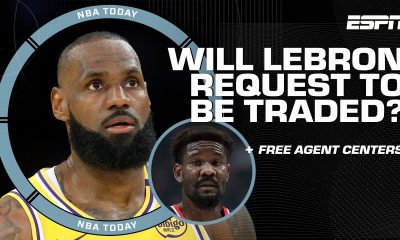
 Youtube3 weeks ago
Youtube3 weeks agoWill LeBron James request a trade? 🤔 Windy says MULTIPLE TEAMS would make offers 👀 | NBA Today
-
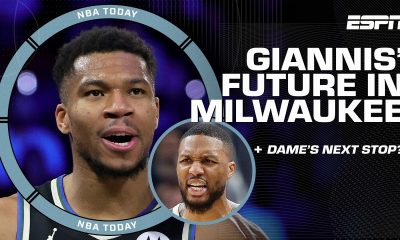
 Youtube2 weeks ago
Youtube2 weeks agoWill Giannis DEPART Milwaukee⁉️ + How signing Turner & waiving Dame impacts the Bucks | NBA Today
-

 College Sports2 weeks ago
College Sports2 weeks agoBuford DB Tyriq Green Commits to Georgia
-

 Sports2 weeks ago
Sports2 weeks agoNew NCAA historical database provides wealth of information on championships




























